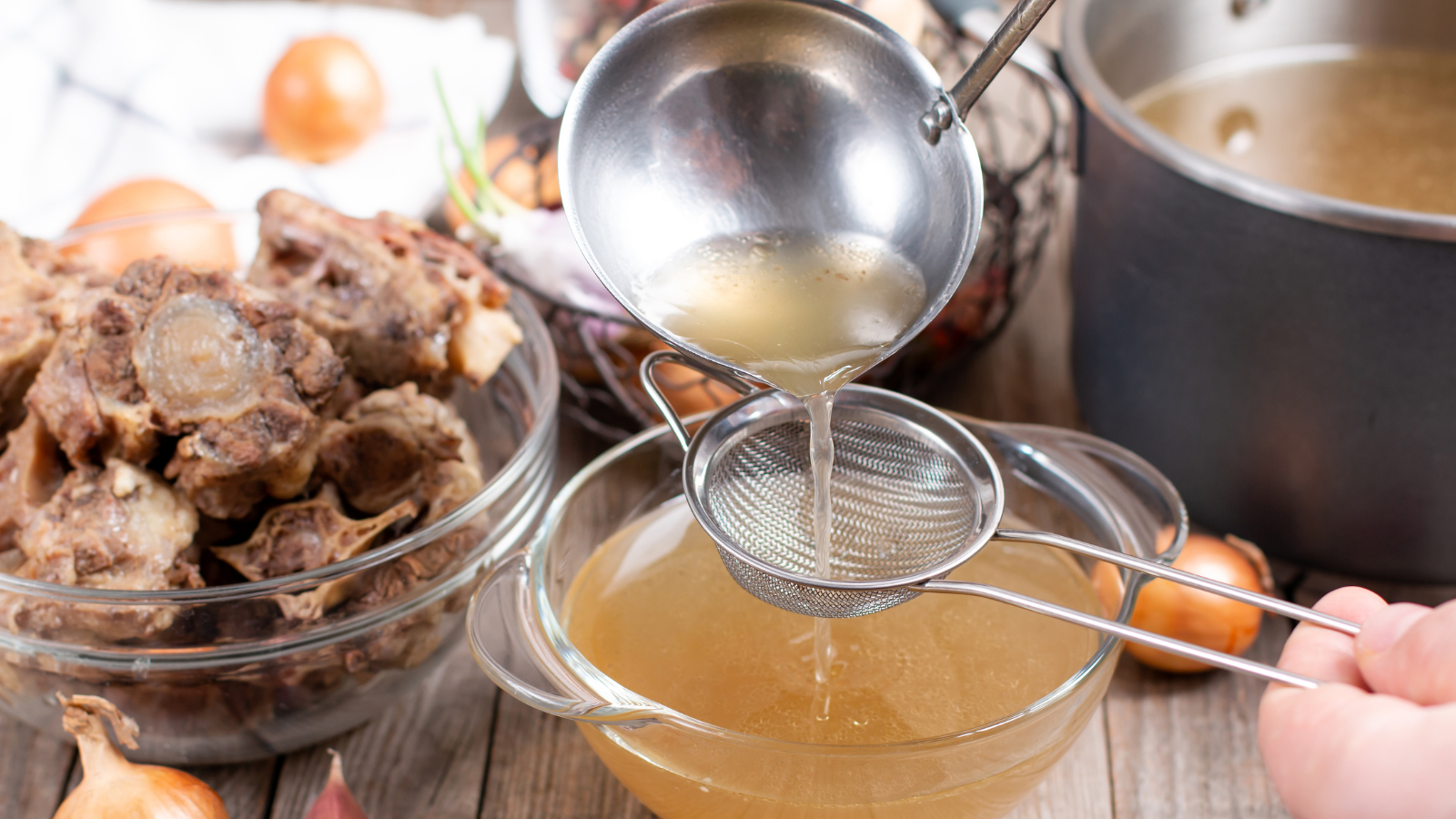Beef Stock
Today I am sharing my recipe for beef broth. Talk about nourishing! Chock full of minerals and healing gelatin, grass-fed beef broth not only heals the digestive tract, it’s also great for your skin and bones.

Today I am sharing my recipe for beef broth. Talk about nourishing! Chock full of minerals and healing gelatin, grass-fed beef broth not only heals the digestive tract, it’s also great for your skin and bones.
Bone broth is rich in collagen, which we need for strong teeth, bones, hair and fingernails. Instead of getting collagen injections in our lips, why not just eat more broth?
Think it’s too hot to eat beef broth in summer? How about making some refreshing chilled gazpacho soup?
Recipe Notes:
This recipe will work using beef, lamb or bison bones. Look for grass-fed.
Watch the Video
Beef Stock
Ingredients
Beef marrow, oxtail, and/or knuckle bones, from grass-fed animals (2 pounds)
Rib or neck bones, from grass-fed animals (1-2 pounds)
Filtered water (2-4 quarts) – where to buy water filters
Vinegar (1/4 cup)
Onions, white or yellow (1-2)
Carrots (2)
Celery stalks (3)
Optional: Parsley (1 bunch)
Equipment
Stock pot (enamel or stainless steel — not aluminum)
1 2-gallon glass jar (I use the ones I make kombucha in)
Slotted spoon or tongs
1 mesh strainer
Optional: Cheesecloth
Directions
1. Add the bones, to a stockpot or crock pot with vinegar and cover with water. (If you like, roast the bones ahead of time.)
2. Cut up the onions, carrots and celery roughly and add to the pot. Let stand for one hour.
3. Bring to a boil. Remove any scum with a spoon.
4. Simmer stock for at least 12 and as long as 72 hours. (I typically let beef broth simmer for 36-48 hours.)
5. Just before finishing, finely chop the optional parsley, add it to the pot, and simmer another 10 minutes.
6. Remove bones with tongs or a slotted spoon.
7. Strain the stock into large glass bowl or glass jar.
8. Let cool in the refrigerator.
9. When chilled, remove the congealed fat that has risen to the top. (You can melt and strain and use as beef tallow).
10. Transfer to smaller containers and to the freezer for long-term storage.



Comments ()